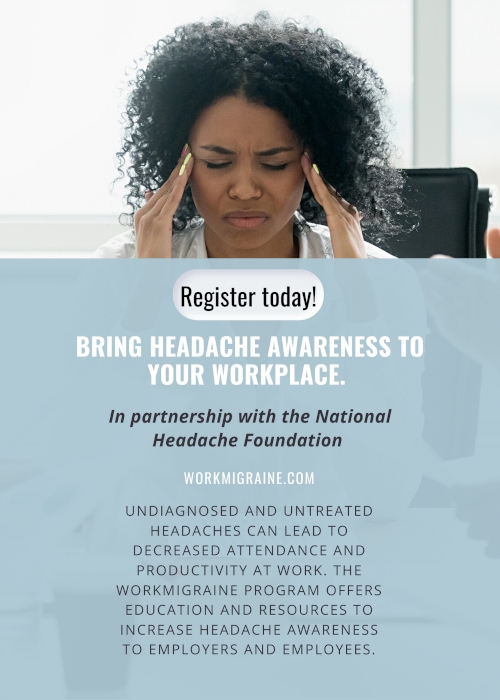Oral, Head & Neck Cancer Awareness
Sunday, February 23rd, 2020
In 2020, we observe Oral, Head and Neck Cancer Awareness Week from April 13th-19th. Since 71 percent of Americans have never been examined for these types of cancers, free screenings are offered during the Awareness week. Help us spread awareness by promoting the free screenings and spreading knowledge about symptoms with individuals who may be at risk.
Who is at Risk for Developing Oral, Head and Neck Cancer?

Those at risk include anyone who smokes or uses tobacco. Tobacco use accounts for 85% of all cases of oral, head and neck cancers. Excessive alcohol intake also puts you at risk and the combination of the two increases your risk dramatically.
Human papillomavirus is another common cause of cancer, especially of the throat. Epstein-Barr virus usually remains dormant in infected individuals. It can exhibit itself in the form of mono and has also been associated with nasopharynx cancer.
Men are 2-3 times more likely to develop some form of oral, head or neck cancer than women. Poor nutrition lacking in A and B vitamins can also increase your risk. People with poor dental hygiene are at an increased risk as well as sufferers of GERD (gastroesophageal reflux disease).
Symptoms
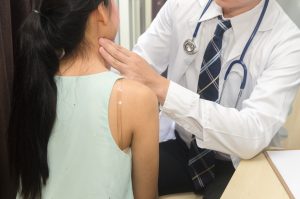
Oral, head and neck cancers are found the squamous cells that line the head and neck. Symptoms can exhibit in the form of a lump in these areas. They may also cause a longterm sore throat or persistent fever. Other symptoms include difficulty swallowing and a change in voice.
Any of the above symptoms could also be indicators of a less serious condition. If you have any of these symptoms, it’s best to be seen by a medical professional to determine the exact cause.
Prevention
Early diagnosis is imperative for preventing the development of these cancers. This is why the free screenings offered are so important to take part in. Last year hundreds of free screenings were offered in hospitals and medical centers across the country and the world. Free screenings can be found throughout the year, but the most availability occurs during the awareness week.
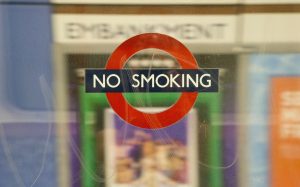
Simply ceasing tobacco use is a great way to prevent cancer from developing. Our bodies have the amazing ability to even reverse the damage that has already been done. Younger, healthy individuals have been known to develop oral, head and neck cancers more as a result of HPV. Receiving vaccination against the virus is essential to preventing these cancers.
How To Spread Awareness
Visit the Head and Neck Cancer Alliance to find out more about how to host a free screening event. You can also search for free screening sites near you on their website.
In addition to attending a free screening, there are other events offered like runs, education workshops, galas, and silent auctions. It doesn’t take much to share a social media post or to communicate your own story with your sphere of influence. Do what you can to promote health and oral, head and neck cancer awareness. Together we can save lives.
Promoting a Safe & Healthy Workplace
Friday, February 21st, 2020
“Almost 3 million workers die each year from occupational accidents and work related diseases. This is an unacceptable and avoidable human cost. We can and must reduce and eliminate such deaths, injuries and diseases from work.”
International Labour Organization Director-General, Guy Ryder
The quote above is extremely sobering. When we realize that the vast majority of these illnesses and deaths are due to mere human error, we understand how important greater education and prevention truly are. We cannot afford so many lives lost or affected by our carelessness or neglect.
At IAB, we are doing our part to spread health education in the workplace. We connect healthcare providers with employer groups to help bring wellness to the workplace. This April 28th, we observe World Day for Safety and Health in the Workplace. Each year the International Labour Organization focuses on a specific theme for this day. Below we will go over some practical ways to promote health and safety in your workplace.
Healthy Habits in the Workplace
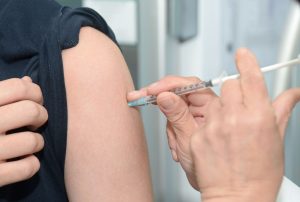
- Handwashing
- Handwashing is always the single most effective and simplest way to prevent the spread of disease. You should always wash hands after using the restroom. Wash hands at the start of your shift, after removing any protective gloves, between patients, before food prep, etc. Be mindful of the type of work you’re in and fill in appropriate times when diseases could potentially be spread. Never underestimate the importance and effectiveness of handwashing. Keeping a generally clean and sanitary work environment also prevents the spread of disease.
- Ventilation
- Proper air ventilation can also help prevent the spread of disease. The building humidity should be kept at 60 percent or less to inhibit the growth of any mold or fungus. Ensure that the building’s ventilation system is maintained properly. Circulation of fresh air keeps bacteria from growing and provides healthy air to breathe.
- Vaccinations
- Keep up to date on all the recommended vaccinations. Providing on-site vaccinations that pertain to your line of work is an extra measure that is well worth the effort. Tetanus and Flu shots are beneficial to everyone. Certain hepatitis vaccinations should be emphasized to protect those working with children, in healthcare or waste collection. Consult your doctor for the best vaccine recommendations for your workplace.
- Protective gear
- If you can potentially come into contact with any type of hazardous material at work, the proper protective covering can be life-saving. Eyes and mouths are vulnerable areas that can easily contract an illness. Keep them covered with masks, face shields, respirators, and safety glasses. Use gowns and gloves to cover clothing and hands which can carry infectious material. Without these coverings, diseases can be spread from person to person or from hand to face.
Safety in the Workplace

Safety policies and procedures are extremely important. But they are only useful if they are actually practiced. Review policies frequently and make sure all employees are familiar with them. Making safety a priority has to become a habit and habits take time to develop. When you create a work environment that promotes safe practices, it has to start with the employer to trickle down to the employees. Create a culture of safety and new employees will naturally be grafted in.
Other things to keep in mind when promoting a safe work environment:
- Always wear protective safety gear where appropriate.
- Understand that safety is non-negotiable.
- Take extra care to hire employees with integrity who will put safety first and not cut corners.
- Make plans and practice procedures for emergency situations.
- Provide proper training and multiple opportunities for practice.
ILO 2020 Theme: Violence and Harassment in the World of Work

Violence and harassment are unfortunate realities in the workplace. Where there are large groups of people, there will always be a risk for some occurrence of inappropriate or dangerous behavior. Here are some practical ways we can help decrease their occurrence or at least head them off before any real danger occurs.
- Employers –
- Be sure to check on the morale of your employees. You can’t monitor everyone all the time, but if you’re an easy person to approach, employees are more likely to come to you when there is a problem.
- Hire people for their skill level but also for their character.
- Offer training and materials on what to do if you experience or witness bullying or harassment at work.
- Have a harassment policy and review it often.
- Employees –
- Speak up. If you feel as though you or a coworker may be in danger, tell someone about it. Don’t try to handle it on your own. Making a big deal out of nothing is better than waiting until it’s too late.A Forbes article on Workplace safety gave this real-life example:
A woman overheard a colleague talking fearfully to her boyfriend while on a break outside the building; the woman was pleading with her boyfriend not to show up at her office. The colleague reported this to Human Resources and they called the police who showed up mere minutes before the boyfriend appeared; he was armed. By speaking up, the colleague had saved the day.
- Know your rights. If you’re being harassed or discriminated against report it.
- Keep notes on occurrences of harassment with as many details as possible.
- Call the police. If you’ve become a victim of a criminal act, do not hesitate to contact authorities.
- Speak up. If you feel as though you or a coworker may be in danger, tell someone about it. Don’t try to handle it on your own. Making a big deal out of nothing is better than waiting until it’s too late.A Forbes article on Workplace safety gave this real-life example:
Together we can make our workplace a safer and healthier place to be. Training and prevention are absolutely essential for our success in diminishing the number of casualties each year. Visit our National Wellness Observance Calendar for more resources on World Day for Safety and Health at Work.
Healthy Feet on the Job
Wednesday, February 19th, 2020
Our feet do the grunt work by supporting our entire bodies every day. They carry us from place to place from infancy through adulthood covering upwards of 100,000 miles. Our feet are the very foundation for our bodies but are typically ignored until there’s a problem. Once there’s a problem, it can affect our entire body’s overall health. Since our feet work so hard for us, why don’t we take care of them before any problems begin? Let’s go over some ways we can care for our feet and keep them healthy as they carry us through both our workday and life.
Proper Footwear
Wearing shoes with little to no arch support can wreak havoc on your body. Not only does a good supportive shoe provide a steady foundation and balance, but it also contributes to your overall activity level. Your arch comes under the most strain as you stand and walk. Without support, you may experience back pain, foot pain, and even headaches or stomachaches.
It can be challenging to find proper footwear when you work in an environment that requires more formal attire. Purchase a good shoe insert to make even the least supportive shoes more foot health-friendly.
If you can wear a shoe with laces at work, choose one with multiple eyelets. The more a shoe has, the more it can conform to the shape of your foot, providing the best support.
Moisturize
There are plenty of lotions and creams out there that are touted as the best for your feet. Any of them will do. The real trick to moisturizing your feet is to make sure you are first exfoliating. Get rid of any dead skin cells so that your dry feet will be ready to receive new moisture.

You can use a simple washcloth after soaking your feet, or a loofah or pumice stone for those extra dry, callused areas. Adding some Epsom salt to your bath can help soften the skin on your feet, making it easier to remove any dead skin.
Follow your exfoliation with a lotion or petroleum jelly to seal in moisture. Most of all, be consistent. Your feet crave moisture daily. Make sure your body is also hydrated from the inside by drinking plenty of water and eating a diet rich in Omega fatty acids.
Good Foot Hygiene
It’s easy to ignore our feet when it comes to hygiene. They’re typically covered inside a shoe, so who’s really going to see them? They’re also a long way down there! May we suggest you take the small extra effort to pay special attention to your feet? Here are some issues that may arise from poor hygiene and how you can prevent and address them:
- Ingrown toenails – ingrown toenails can be painful and uncomfortable. Be sure to keep your toenails trimmed, but not too short! Trim your toenails straight across rather than rounding the edges. Maybe most important, choose shoes that fit your foot properly! Shoes that are too tight can contribute to an ingrown toenail. Your toes should be able to wiggle freely inside.
- Smelly feet/shoes – This is a common problem for shoes that you may wear daily. Feet sweat and when they are inside a sock and shoe for over eight hours a day, that doesn’t leave much room for air circulation. Sometimes you are left with a shoe that stinks no matter what you do! In order to prevent those perpetually smelly feet, try to alternate between at least two different pairs of shoes for work. This allows one pair to completely dry out for over 24 hours. It won’t stop your feet from sweating, but it should allow the smell to decrease. Also, wear cotton socks to wick sweat away. Socks made of other materials may trap moisture in and worsen the issue. Choosing leather shoes over plastic or other synthetic material can also promote more air circulation to your feet.

- Infections/Itchy Feet – there are many different causes for itchy feet and not all of them relate to hygiene. However, one that does is a fungal infection we all know as “athletes foot”. Athlete’s foot can develop if your feet sweat and you’re wearing shoes that are too tight. Make sure your shoes fit properly and that you change out of sweaty socks as soon as possible. Even washing your feet with antibacterial soap can be helpful, paying close attention to in between your toes.
- Dry, cracked heels – Feet tend to be exceptionally dry. If you’re someone who spends a lot of time on their feet, your dry heels may even crack. These cracks leave your feet open and susceptible to infection. Use a thick moisturizer on your feet each night before bed and especially after washing to lock in moisture. Resist the urge to be barefoot as much as possible since it can lead to drier feet and the potential for infection.
April is Foot Health Awareness Month! Visit our National Wellness Observance Calendar for more resources on Foot Health as well as a FREE Calendar download. See our Wellness Blog on Workplace Wellness for tips on how to bring this education into your workplace.
How to Bring Wellness to Your Workplace
Tuesday, February 11th, 2020
IAB Health Productions was founded as a tool to bring Wellness into the Workplace. We believe wellness education is important, given the amount of time individuals spend in the workplace and the impact health has on employee performance and associated benefits cost. At IAB, we promote workplace wellness in various ways: through our corporate health fairs across the nation, our National Wellness Calendar downloads, monthly Wellness Newsletter, blog posts, and a variety of social media platforms.
We utilize our social media accounts to highlight wellness observances and promote our health fair events to vendors. But how can you make the most of them? Here are some ways that you can achieve Wellness in your Workplace.
2022 Wellness Observance Calendar
We provide perhaps the most comprehensive list of Wellness Observances and resources available on the internet. Each year it is updated with new links and information to benefit you most.
We highly recommend staying ahead of the curve and planning the observances you want to highlight in your office setting. Not every observance will be relevant to every place of employment, but there is plenty to choose from.
Many of the resources listed have posters and infographics available. These are excellent tools for your workplace education that you can post on bulletin boards and in break rooms. Think of common areas where employees will frequently see the information and be able to apply it to their personal health.

Downloading our Wellness Calendar will also give you access to our monthly email newsletter. Newsletters highlight upcoming wellness observances a month in advance, giving you plenty of time to gather resources and information for your employees. We’ll also provide links to relevant wellness blog posts that include in-depth information about carefully selected wellness topics.
Utilize our Free Health Fair Planning Tools
 As an employer or broker for a company, you are eligible to use our FREE health fair planning tools. Corporate events of any kind can be time-consuming and exhausting to plan. From the very beginning of IAB’s inception, we’ve done our best to simplify that process for you.
As an employer or broker for a company, you are eligible to use our FREE health fair planning tools. Corporate events of any kind can be time-consuming and exhausting to plan. From the very beginning of IAB’s inception, we’ve done our best to simplify that process for you.
Rather than spending time hunting down appropriate vendor booths for your Health Fair, we take care of promoting the event and capitalizing on relationships with vendors that we’ve already built. You’ll also have the option to use some tried and true vendors that you know you want, and approve or deny any who apply to participate.
Once you’ve registered your free account with us, you’ll receive personalized instructions on how to move forward in the process. We’ll help you every step of the way. There is no charge to you for these services. The fees paid by the vendors cover those costs.

Many of our Vendors also offer Health and Wellness Workshops that can be offered on-site at your workplace. We have a database available for you to search for desired health topics and instructors.
Share Information
You can locate IAB Health Productions on Facebook, Instagram, Twitter, and LinkedIn. We post about each upcoming event that is accepting vendors, giving opportunities for multiple health care providers in each area to participate. We also emphasize important Wellness Observances each month, linking to Wellness Blogs and our Wellness Calendar.

These observance posts are always filled with key information about the importance of each specific issue. The posts are easy to share and a great reminder for what’s being talked about in the health and wellness arena at that particular time of year.
Our main goal is in bringing Wellness to the Workplace. We want to make sure that you are equipped with as many resources and opportunities as we can possibly provide. We welcome your feedback! How can we do more to help you spread awareness in your place of employment? IAB is always seeking new and effective ways to help people stay healthy and informed.
10 Healthy Meals for Your Work Week
Monday, January 20th, 2020
We all know we should eat more healthily. Many of us simply don’t have the time it takes to plan and prepare healthy meals. We want to help you take the guesswork out of what to eat this week. We’ve gathered 5 healthy, easy to prep and pack for work lunches and 5 fast, easy and delicious dinners for each work night this week. That’s 10 healthy meals for your workweek.
Healthy Lunches to Pack for Work
- Hummus and Veggie Wraps – These are a great, tasty way to get in extra veggies. Use whatever veggies you have on hand. You’ll get extra protein from the hummus and by adding some deli meat or grilled chicken. Switch out white flour tortillas for some whole wheat or low carb options to increase your nutrients.

Photo belongs to laurenslatest.com
- Deli Snack Box – The options are truly endless when it comes to creating a deli snack box. Include a veggie, fruit, cheese, protein, and carb. These snack boxes are light while still being filling and full of variety, color, and good nutrition.

Deli snack boxes can be as varied and unique as the people who eat them.
- Kale Salad – If you’ve never tried a Kale Salad, you’re really missing out. Massage some olive oil into the leaves to soften them, add some lemon juice, slivered almonds, dried cranberries, and parmesan and you’ve got a delicious meal. Throw on some shredded chicken for some filling protein to round it out.

This Kale Salad uses quinoa as a great addition of protein and complex carbs.
- Tuna Salad Lettuce Wraps – Tuna salad is always a great go-to healthy lunch option. Wrapping it in lettuce instead of bread is a perfect way to reduce your simple carb intake and avoid that afternoon carb crash. If you’re trying to cut down on fat, try this mayo-free rendition of tuna salad, full of flavor.

Photo belongs to projectmealplan.com
- Burrito Bowl – Rather than head to your favorite burrito bowl restaurant, save ten bucks by packing your own! You’ll save money and calories by building your own, simple burrito bowl.

Photo belongs to everydaymealprep.com
Easy, Healthy Weeknight Dinners
- Burger Bowls – Burger bowls are a super easy, fast, low carb meal to throw together on a weeknight. Grab a bag of sweet potato chips or frozen sweet potato fries as a low maintenance side item.

Photo belongs to thehoneyblonde.com
- One Pan Balsamic Chicken – Any recipe with “one pan” in the title is a winner! Easy preparation and easy cleanup. This delicious 30-minute dinner from Better Homes & Gardens is sure to be a favorite.

Photo belongs to bhg.com /Jason Donnelly
- Slow Cooker Stuffed Pepper Soup – This soup is our only slow cooker meal on the list, so it does require a little extra prep work. It’s still super simple and easy and once you’ve thrown it all in, it can cook away while you’re at work. The soup also makes great leftovers for lunches the next day.

Photo belongs to recipesthatcrock.com
- Avocado Salmon Rice Bowl – Here’s a meal that’s full of healthy fats and omega-3s. You can purchase bags of frozen salmon fairly inexpensively. You can also swap the white rice for brown or even buy a bag of frozen cauliflower rice to increase nutrient density.

Photo belongs to willcookforsmiles.com
- Cauliflower Crust Veggie Pizza – You can purchase a frozen cauliflower pizza crust in your local grocer’s freezer section. Sometimes they even come with two crusts in a box! Add some pizza sauce and your favorite toppings for a healthy variation on pizza night.

Add extra veggies to pack in even more nutrients into this guilt-free pizza!
March is National Nutrition Month! Visit our Wellness Calendar for a free download of the upcoming Wellness Observances. If you’re interested in hosting a health fair at your workplace, check out our FREE planning tools. If you’re a healthcare provider, register a booth at a health fair near you!
5 Healthy Sleep Habits
Sunday, January 19th, 2020
We hear a lot about a healthy diet and an active lifestyle when it comes to wellness. There’s a third element to a healthy lifestyle that is often ignored or deemphasized: healthy sleep. It may be challenging or near impossible to get our recommended eight hours of sleep. Our efforts to lose weight, maintain top performance at our jobs and our interactions with other people all rely on our sufficient rest.

Here are five healthy habits to ensure your body gets the rest it needs to function best.
1. Stick to a Schedule
It can be tempting to stay up late and sleep in on weekends, but we really set ourselves up for a difficult work week. Our bodies have an inner “clock”. Our brain knows when it’s day time or night time based on our sleep schedule and cycles. When we mess with the time frame by dramatically changing our sleep habits a few days a week, we can spend the rest of the week making up for it.
2. Limit Caffeine Intake
 When we are tired, it’s easy to turn to coffee or soda as a quick pick me up. A cup or two of coffee in the morning can be beneficial. But studies have shown that those who drank four or more caffeinated beverages in a day were more prone to insomnia. On those especially difficult days, it’s best to go for a quick walk outside or rest your eyes for a moment to refresh yourself. Powering through until an early bedtime is your best bet for making up that sleep deficit.
When we are tired, it’s easy to turn to coffee or soda as a quick pick me up. A cup or two of coffee in the morning can be beneficial. But studies have shown that those who drank four or more caffeinated beverages in a day were more prone to insomnia. On those especially difficult days, it’s best to go for a quick walk outside or rest your eyes for a moment to refresh yourself. Powering through until an early bedtime is your best bet for making up that sleep deficit.
3. Have a Nighttime Routine
As infants and children, we typically had some type of nighttime routine. It may have consisted of a bath, a bedtime story, and a lullaby. The things signaled our bodies and brains for sleep. Why not establish a regular routine in your adult life to achieve the same end?
Incorporate a relaxing yoga routine into your evening activities. Turn off the TV and put away your phone for some quiet reading before bed. Even as little as fifteen to twenty minutes of reading can help your mind settle down from the constant stimulation of the day.
4. Exercise

Regular exercise in your week can help promote the hormone melatonin, known as the “sleep hormone.” Just make sure your exercise isn’t too close to bedtime or it may have a counterproductive effect. Exercise can not only help regulate your sleep patterns but also boost your general mood and wellness.
5. Think Sleepy Thoughts
It can be difficult to shut our brains off after a full day’s events. There’s a neverending source of problems to solve, things to worry about and events to replay. Write down whatever threatens to run around and around in your mind, preventing sleep. If you’re still unable to fall asleep after 20 minutes or so, get up and go to the other room to read or write until you feel drowsy.
Once a pattern of insomnia or sleep deprivation has developed, our minds can create a self-fulfilling problem. Worrying about not being able to sleep has proven to be even more harmful than the lack of sleep itself. If you’ve continued to struggle with your sleep habits, despite your best efforts, do not hesitate to speak with your healthcare professional. They can help you come up with a plan that will fit you best. The long term negative effects of sleep deprivation are far too serious to go unattended.
March 1 – 7 is National Sleep Awareness Week! Visit our Wellness Calendar for a free download of the upcoming Wellness Observances. If you’re interested in hosting a health fair at your workplace, check out our FREE planning tools. If you’re a healthcare provider, register a booth at a health fair near you!
The Effects of Blue Light On Your Eyes
Monday, January 13th, 2020
There are conflicting reports about the effects of blue light on your eyes. Some studies claim potential damage to the retina by overexposure, while still others insist there’s no effect at all. Since so many of us spend a great deal of time exposed to blue light screens in the workplace, it’s become a significant issue for workplace eye health.

Blue Light & Potential Hazards
It’s important to note that the largest source of blue light comes from our largest light source: the sun! We’re exposed to blue light on a daily basis. We know that light is composed of an entire spectrum of color, as evidenced by the rainbow. The red light being slower and dimmer while the blue light is brighter and moves more quickly. Our technological screens, like TVs, computers, smartphones, and tablets emit a much smaller source of blue light than the sun. So why is there so much concern surrounding blue light and our vision?
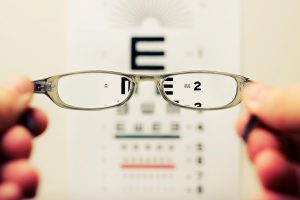
We spend an exorbitant amount of time with our eyes glued to some type of blue light screen. In fact, over the last thirty years, nearsightedness has seen a dramatic increase of over sixty percent! This could be due to the correlating time frame of increased computer usage. The ultimate concern is that so much time staring at blue light may have some very negative effects on our eyes. Some symptoms reported by those with excessive screen use include:
- Dry eyes
- headache
- blurry vision
- eye twitching
- sore, tired eyes
The popularity of blue light glasses has led many to believe they are experiencing relief from these symptoms. While still, other professionals say it’s only a placebo effect. They hold to the fact that there is no real evidence of any negative affect from blue light, but that symptoms are merely from the way technology is used.
Tips for reducing digital eye strain symptoms:
If you find yourself suffering from any of the previously mentioned symptoms, try some of the following solutions.
- Follow the 20-20-20 rule, giving your eyes a break every 20 minutes for a minimum of 20 seconds to scan the room 20 feet away. This gives your eyes a chance to focus on objects further away from the screen and gives relief from the light of the screen.
- Sit at arm’s length (25 inches) from your screen.
- Blink often. We tend to blink less when staring at a computer screen which can make your eyes dry or tired.
- Adjust the settings on your screen. Adjusting the contrast levels of your screen can make staring at your screen easier on your eyes.
- Purchase a matte filter to place over your screens to reduce glare.
- Simply reduce the amount of time spent looking at a screen.

Further study is needed to determine any concrete evidence of blue light leading to retinal damage. But if blue light glasses and other aids seem to provide some relief to your symptoms, there is no harm in using them. They have only yet to be proven medically necessary.
To ensure good eye health, get your eyes checked regularly by an optometrist or ophthalmologist. After age 65 it is recommended that your eyes are examined every 1-2 years in order to catch any early signs of disease. Visit our Wellness Calendar for more information and resources regarding eye health.
Other Eye Health Wellness Articles:
Benefits of Recreational Therapy
Sunday, December 29th, 2019
There are many life skills and simple daily tasks we take for granted. They may come so easily to most of us that we fail to recognize the great impact they have on our overall health. People with disabilities, mental health challenges or other injuries can suffer from a lack of these everyday life skills and general well being. Recreational Therapy provides a solution to this problem.
What is Recreational Therapy

Recreational therapy is defined by any form of activity that contributes to the mental, social and physical health of the patient. Recreational Therapy can take many forms and is as varied as its patients. Recreational Therapists are certified and specialized to tailor a therapy program specifically for each person. Through a series of observations and conversations, a program is developed to promote growth and health.
Recreational therapy focuses on the whole health of a person. Its benefits have even been known to render other therapies or medications unnecessary.
Benefits of Recreational Therapy
People who are suffering from a debilitating injury or illness sometimes suffer from depression and anxiety, isolation and general dependence on others. Recreation activities provide more than just leisure and enjoyment – although those things are more important to your health than you might realize. They are specifically targeted to an individual’s needs.
Recreational therapy promotes independence, mental clarity, socialization skills and exposure, decision-making skills and creative expression. These things all contribute to a quality of life that may otherwise be nonexistent. The things we take for granted, others without them are longing to possess.

Who Can Benefit from Recreational Therapy
Research has shown that recreational therapy can have positive outcomes for a number of different people of all ages. Some examples of types of people whom recreational therapy can benefit are:
- Physically disabled
- Mentally disabled
- Elderly People
- Pediatric Patients
- Developmental Disabilities
- Brain Injuries
- Psychiatric Disorders
Recreational therapy provides a cost-effective way to treat patients. It treats the whole person and provides skills that carry over into all aspects of life.
Examples of Recreational Therapy Activities

Each activity used in recreational therapy is used for a purpose. Patients with Alzheimer’s may use memory games and do crafts that help link synapses in the brain. Individuals with balance issues can try bowling which helps develop balance and strength simultaneously. Exercise, dance, music and other creative expression activities help with a range of mental health illnesses.
Pet therapy is another form of recreational therapy. One type is “Beta Fish Therapy” which can lower blood pressure and depression, simply by observing the tranquil, beautiful fish. Balancing stones on top of one another is a concentration activity that promotes mindfulness and stress management.

If you think you or someone you know may benefit from recreational therapy, talk to your healthcare provider. Most practices have a referral process in place and can direct you to the proper therapy provider.
For more information and resources on Recreational Therapy, visit our National Wellness Calendar. Join us in February as we spread awareness about Recreational Therapy Month by sharing this blog post!
Age-Related Macular Degeneration
Sunday, December 29th, 2019
What is Age-related Macular Degeneration (AMD)?

Age-related Macular Degeneration is the leading cause of vision loss in Americans aged 50 and over. The macula is located at the back of the retina and controls our central and color vision. Vision impairment from AMD occurs in one of two ways. In dry AMD, protein called drusin gather under the macula and begin to deteriorate the retinal support system. Once the structural support system of the retina has been broken down, it moves into wet AMD. The breaking down of that support allows abnormal blood vessels to grow and potentially leak into the retina, causing a loss of central vision.
Symptoms and Risk Factors of AMD
There are no real symptoms for age-related macular degeneration or low vision until the condition has progressed. Only an examination by your eye doctor can reveal indications before they become a problem. That is why it is so imperative that you get regular eye exams. After the age of 60, schedule exams for every year or as recommended by your doctor. Once the problem is identified, there are measures to take to slow or repair the damage to your vision.

Once you have AMD, you may see a dark spot in the middle of your vision. Lines or outlines of objects will also appear distorted or blurred. Colors may also appear different or faded.
Risk factors include but are not limited to:
- Genetics
- History of smoking
- Being female
- UV Light
- Age (50+)
AMD Treatment Options
The best treatment is always preventative measures. Scheduling regular eye exams will enable your doctor to recognize any issues before they progress. Catching AMD in the early stages leads to treatment by vitamin supplementation. Vitamins C, E, Beta Carotene, Zinc Oxide and Cupric Oxide have been shown to decrease the progression of Macular Degeneration when taken in the early stages.

If you are a smoker and show signs of AMD, the first step is to quit smoking. Then use caution when treating with vitamins since too much beta carotene in smokers has proven to increase the risk for lung cancer.
A healthy diet full of leafy green vegetables is also recommended for treatment.
The treatment for advanced stages of AMD is rapidly developing. There are various treatments that can be recommended by your doctor that focus on slowing the growth of blood vessels. These efforts can put a halt on any additional vision loss.
For additional information and resources on treatments and risk factors, visit our National Wellness Calendar. We’ll observe Age-Related Macular Degeneration Awareness Month this February 2020.



